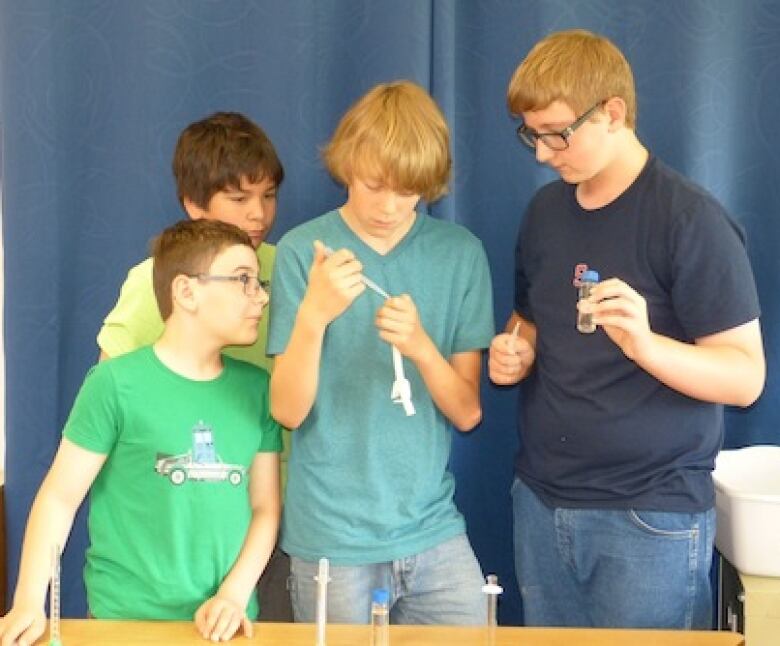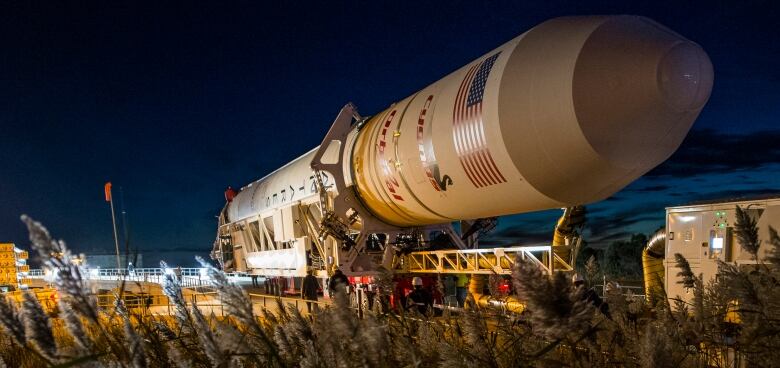Antares rocket explosion: Kamloops students lose science experiment
No injuries reported when unmanned rocket blew up, says NASA
When anunmanned Antares rocket exploded shortly after liftoff Tuesday in Virginia, a designed-in-B.C. student science experiment went up in flames with it.
More than 2,200kilograms of supplies, science experiments and equipment bound for the International Space Station (ISS) was destroyed in the blast.NASA said no injuries were reported and the cause of the explosion is unknown.
Sharmane Baerg, a teacher at AlbertMcGowan Park Elementary in Kamloops, B.C., said an experiment devised by her students last school year was in that payload.

Four boys who now attend Sahali Secondary but were in Baerg'sGrade 7 class last year came up with the idea of comparing crystal growth on Earth to crystalgrowth in microgravity.
"Basically, what the boys are thinking is that the crystals will grow bigger in microgravity," she told CBC News earlier Tuesday, before the rocket launch.
The in-class competition to define and design aspace experiment began with brainstorming in March.
"As we went along, the class voted on which project would get to go forward and this was the one that was selected," Baerg said.

The crystal-growth experiment wasshortlisted out of more than 1,400 proposals entered into the NASA competition, and ended up being one of the final 18 projects chosen by a NASAcommittee to go into space.
The experiment was supposed to launch today, reach the ISS on Nov. 2, come back to Earthin late December, and arrive in Kamloops inJanuary, where students would measure their growth.
The students in Baerg'sclass were going to grow the same type of crystal at the same time in Kamloops, providing the control.
Baerg spoke with CBC News again, after watching the failed launch with the families of her former students with a celebratory rocket-shaped cake standing by.
"We were sitting down, watching it on the big-screen TV. We were all cheering because we were finally counting down, and counting down and we were watching, and cheering and then it exploded, six seconds after takeoff, unfortunately," she said.

The studentstook it well.
"It was just a bit of shock at first, of course,but they recovered," she said. "And then they started laughing... there were no injuries, so that's really good."
Baerg said she hasn't heard any official word about what happens next, but said her class will try to go ahead and get another experimental setup approved to go ahead on a future mission.













_(720p).jpg)


 OFFICIAL HD MUSIC VIDEO.jpg)
.jpg)



























































































